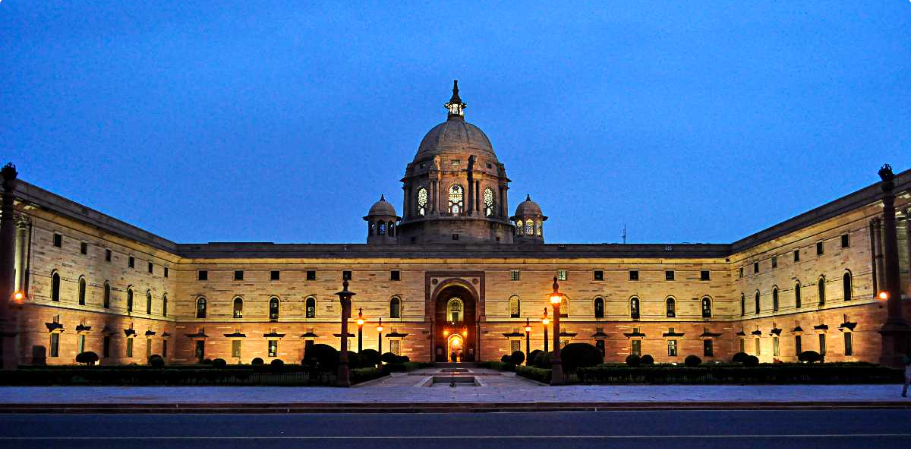Rashtrapati Bhavan – A Symbol of Indian Democracy
Rashtrapati Bhavan, located in New Delhi, is the official residence of the President of India. It is one of the largest and most magnificent residences of any head of state in the world. Designed by British architect Sir Edwin Lutyens, its construction began in 1912 and was completed in 1929. Originally known as the Viceroy’s House during British rule, it became Rashtrapati Bhavan after India gained independence in 1947.
The building is a blend of classical European and Indian architectural styles. It covers an area of about 330 acres, with the main building occupying 5 acres. The Bhavan has 340 rooms, including the President’s official residence, guest rooms, reception halls, offices, and staff quarters. The grand structure is made of sandstone and features impressive columns, large domes, and intricate carvings.
One of the most attractive features of Rashtrapati Bhavan is the Mughal Gardens, which are open to the public during spring. These gardens are beautifully laid out with a wide variety of flowers, water fountains, and neatly trimmed lawns.
Rashtrapati Bhavan is not just a residence but a symbol of Indian democracy and governance. It hosts important national events and ceremonies, such as the swearing-in of the Prime Minister and other constitutional dignitaries. It also serves as a place for welcoming foreign dignitaries and heads of state.
Today, parts of the Rashtrapati Bhavan are open to the public for guided tours, allowing citizens to witness the historical and cultural richness of India. It stands as a proud reminder of India’s journey from colonialism to a sovereign republic.

Explore the grandeur of Rashtrapati Bhawan, the official residence of India’s President, showcasing stunning architecture and rich heritage.
Read More on Rashtrapati Bhavan
Architecture of Rashtrapati Bhawan
Undoubtedly, the Rashtrapati Bhawan is an imposing and admirable work of engineering. It consists of four floors with 340 rooms and the floor area spans over a massive 200,000 square feet. Lutyen’s design was essentially classical with inspiration drawn from Indian architecture. A number of classical Indian motifs find an appearance in the architecture, ranging from imperial elephants to circular stone basins. The main building has a drawing room, ballroom, library, dining room and private apartments. The Durbar Hall, which is a major venue for all the ceremonies inside the Rashtrapati Bhawan has a dome that measures 22.8 meters in diameter and is marked with various coloured marbles. The Viceroy’s throne is also present in the hall and is quite a spectacle to behold.
History of Rashtrapati Bhavan
Facts about Rashtraparti Bhawan
How to Reach
Itinerary
Delhi Travel Packages
Compare quotes from upto 3 travel agents for free
4 Days / 3 Nights
Short Break to Delhi and Agra
Delhi(2N) → Agra(1N)
₹12,100/personGet Offers>